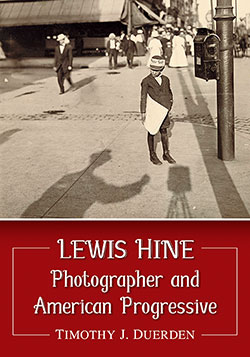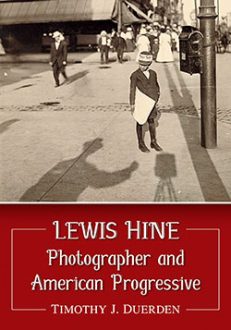Lewis Hine
Photographer and American Progressive
Original price was: $39.95.$19.99Current price is: $19.99.
In stock
About the Book
Nearly 80 years after his death, Lewis Hine’s name is revered in the world of photography and practically synonymous with the labor reforms of the Progressive Era. His body of work—much of it a century old or more—remains vital as both aesthetic statement and social document.
Drawing on a range of sources, including information from surviving family members, this first full-length illustrated biography presents a detailed and personal portrait of the sociologist and photographer whose haunting images of children at work in cotton mills and coal mines sparked the movement to end child labor, culminating with the Fair Labor Standards Act of 1938. There are 62 of his penetrating photographs included.
About the Author(s)
Bibliographic Details
Timothy J. Duerden
Format: softcover (7 x 10)
Pages: 222
Bibliographic Info: 60 photos, notes, bibliography, index
Copyright Date: 2018
pISBN: 978-1-4766-7334-9
eISBN: 978-1-4766-3262-9
Imprint: McFarland
Table of Contents
Acknowledgments ix
Preface 1
Part One 7
1. The Early Years, 1874–1900: Cairo, the “Sawdust City” and Chicago 11
2. New York City, 1901–1909: Progressivism, Ethical Culture and Ellis Island 28
Part Two 55
3. “Sociological Photography,” 1905–1910: Child Labor and the Pittsburgh Survey 60
4. Lewis Hine: Progressive 1910–1918 85
5. World War I and the 1920s 110
Part Three 137
6. The Empire State Building, 1930–1931: “Sky Boy” 141
7. The Hine Family “Jeremiad”: The 1930s 159
8. “Rehabilitation,” 1938–1940: Hine’s New Fame 177
Epilogue 187
Postscript 191
Chapter Notes 193
Bibliography 207
Index 209
Book Reviews & Awards
“The photographs of Lewis Wickes Hine (1874–1940) dramatically document both high (construction of the Empire State Building) and low (child labor, crowded tenements, appalling sweatshops) points in modern American history…. Anyone interested in those topics will appreciate this portrait of an American master.”—Booklist





